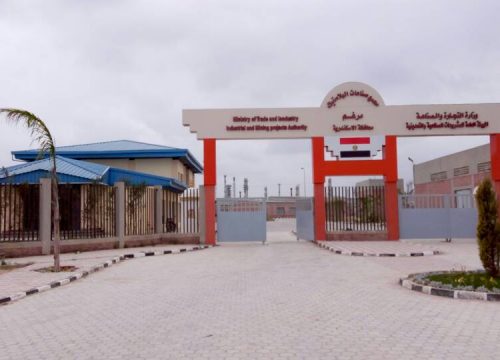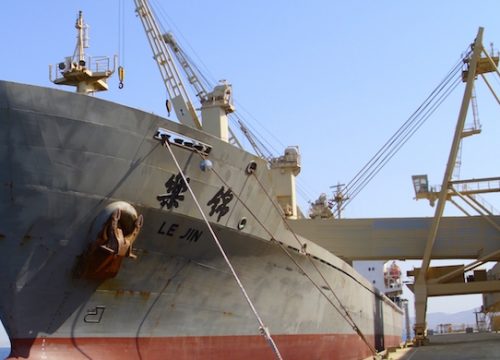
Robbiki Leather City
The project aims at relocation of tannery activities from the area of Old Cairo (down town) to Robbiki suburb, 54 km’s from Cairo. The project controls adverse environmental effects Cairo suffers from, and develops the methods practiced in the field of leather tanning. It also relieves the crowd and congestion affecting the capital due to this traditional activity.
Basic Data of current tanning activity in Egypt:
- Quantity of tanned leather produced is 125 million square feet, Old Cairo’s share is 75%.
- Old Cairo tannery area is 70 fedans
- Current shoes production is 70 million shoes per year.
- 320 private tanneries are in Old Cairo, as well as raw leather stores, chemicals, maintenance workshops, glue and gelatin production units.
- Old Cairo employs 8000 workers.
Current situation in Old Cairo tanneries area:
- Environmentally dangerous problemcaused by industrial drainage resulting in pollution due to chrome and chemicals.
- Usage of traditional and worn equipment rather than modern technology, a method which yields only 48 sq. feet/day per worker, compared to world average of 81 sq. feet/day.
- High cost of production due to low productivity and non-recovery of chrome. Modern technology of chrome recovery may save as much as $1.3m. a year.
- Unhealthy working condition.
- The unextendible area (only 70 fedans) cannot assimilate the application of modern tanning techs.
- No link between tanning activity and leather manufacturing requirements.
- No quality assurance starting from the protection against animals skin diseases which lead to leather cracks and scratches.
- Manual skinning lead to waste of leather.
- No proper technical rules are used in keeping and storing the leather.
Main goals of relocation:
On the industrial level:
- Coping with progress in leather tanning industry.
- Increase of production
- Reduction of waste.
- Improvement of quality.
- Worldwide competitiveness.
On the economic level:
- Reduction of production cost
- Increase of hard currency
- Provision of work opportunity
On the environmental level:
- Controlling part of the environmental problem in Cairo.
- Reuse of industrial drainage water in irrigating a green belt area contouring the Robikycity where the old tanneries are relocated to.
- Recovery of chrome, thus decreasing consumptionand cost.
- Decreasing the average of pollution-related-diseases.
On the social level:
- Promoting the vocational education level.
- Promotion of workers’ income.
- Creating new modern industrial communities.
Economic indicators:
- Productivity is planned to increase from 95 million sq. feet to 200 million sq. feet a year. Estimated production of tanned leather is E.P. 1 billion a year. Estimated amount of leather products isE.P. 6 billion a year.
- Estimated revenue of exports of leather products is $ 1 billion a year.
- 15000 work opportunities are provided.
The new leather city (550 tanneries)is in the middle of an industrial zone less than an hour from Cairo (km. 54, Cairo Suez highway), 60 km’s from Ain Sokhna port on the Red Sea, 5 km’s from Badr City, 10 km’s from 10th of Ramadan City.
It is intended to increase leather production to 250 million feet a year at an increase average of 280 %, and to increase work opportunities to 25000 workers. Exports are planned to exceed $ 300 million a year.
Modern and integrated design of the leather city was set by Italian Association of Tanning Manufacturer. Models of different areas were designed to suit various activities within an integrated program among small, medium and large scale industries. Value added advantage is considered; glue and gelatin factories; equipment and ingredients factories. Raw material and end-product stores are available.
Area of industrial buildings is 560000 m2 equal to 25% of the total area of the project (2.2 million m2) according to international standards of industrial cities. Area of utilities and services is 25% of the total area of project. Roads area is 25%. Main roads width is 28 m and side roads width is 12 m. Green areas occupy 25% of total area.
Integrated infrastructure:
Electricity; 50 mega watts
Water:
- Designed discharge 24000 m3/day
- Main water storage and pumping plant at the boundary of the project is of 16000 m3/ daycapacity.
- Secondary water storage and pumping plant at the boundary of the project is of capacity 8000 m3/ day.
- Natural gas: 4000 m3/h.
Services:
- Administrative building
- Firefighting station
- Ambulance and clinic
- Marketing and distribution outlets.
- Leather and end-product stores
- Communication and post office
- Restaurants and cafeterias
- Transportation yard.
Industrial and technological services:
The project includes Leather Technology and Model Tannery Center on an area of 6000 m2, representing the industry’s backbone in terms of value added attained from:
- Advanced training
- Quality, materials and end products tests
- Line production design and selection of equipment
- Maintenance of tanning equipment
- Quality certificates
- Development and transfer of technology
An Environmentally friendly industrial city:
- Industrial drainage water treatment systems conforming to international standards.
- Chrome recovery system.
- Tanning wastes treatment and recycling.
- Wood production plantation utilizing treatment water to produce wood and bio fuel.
- Green tanning technological processes.
- The city obtained Environment ISO standardscrtificate.
Foundation of a modern administration principle for specialized industrial zones:
- An Industrial zones development company is founded to develop and manage utilities and services of Robbiki leather city in order to accomplish targets of the comprehensive and sustainable industrial development.
- Management, operation and maintenance of basic utilities and leather tanning technological center aided byrelevant specialized companies.
Future target: To sustain similar experience in Alexandria and transfer the practice to neighboring countries in an economic and developmental concept.
-
Category



